Diligence and Fire Keep Riley County Prairie Cedar Free
When asked what he enjoys about his land in Riley County, Bob Haines has a unique answer: the absence of cedar trees.
The 1,250-acre Haines Family Ranch near Tuttle Creek Reservoir in the Flint Hills has been protected through the Kansas Land Trust since 2009. During the past decade, Bob (pictured above and left) has cut and burned thousands upon thousands of cedar trees from the property. As most prairie enthusiasts know, cedar trees are invasive, and when left unchecked, they will take over a prairie.
“A mature cedar tree will take 30 gallons of water a day out of the land,” Bob says. “If you have enough cedars around a good spring, it will dry it up.”
Bob points out that in the early days of European settlement, you could find prairie as far east as Tennessee. Following the Dust Bowl, cedars gained popularity as a means of wind control, and the trees have since crowded out prairies in much of eastern Kansas.
“There is so little prairie left," says Bob. "Now, from Kansas City to 100 miles west, it’s all cedar trees. That’s what happens when you don’t burn."
Bob is referring to controlled burning, a management technique used by landowners to control cedars. Bob says that he occasionally hears from people who worry about the negative effects of the smoke that is created by controlled burns. His reply is that controlled burns are an essential part of maintaining the vanishing Flint Hills ecosystem. A permanent exhibit at the Flint Hills Discovery Center called “Fanning the Flames” does a good job of educating people on the benefits of burning prairies, Bob says.
In recent years, Bob has been using a technique called patch burning, which involves burning only one-third of a pasture each year. This creates one-third of the amount of smoke, reduces the risk of fires getting out of control, and yields great benefits for the plants and animals on the prairie.
“After you go through the cycle, the thatch is so thick, you can hardly walk through it, which is fabulous for upland game birds,” says Bob. “We don’t have many pheasants, but we do have quail and prairie chickens. It’s also really good for the cattle because the grass is more nutritious. And the wildflowers, well, you just have to see them to appreciate them. I’m pretty proud of what we’ve done from an ecological standpoint.”
The protected Haines property has been in Bob’s family since the 1920’s, and Bob has fond childhood memories of visiting the land with his father to inspect the property’s fence line. His family also has 30-year tradition of camping on the land the Friday after Thanksgiving. The Haines Family LLC established the conservation easement utilizing the Army Compatible Use Buffer (ACUB) program and USDA Farm and Ranchland Protection Program (FRPP) fund.

